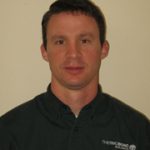Tell us about Wind Measurement International and its core philosophy.
Wind Measurement International installs met masts (measurement towers) in the U.K. and Ireland. This includes a met mast’s full lifecycle: development, power curve, and ref masts. Installations also include temporary (tubular and lattice) and permanent met masts to 100 meters, according to CE BS IEC standards. This also includes all instrument brands. Full after-sales duties include inspections, refurbishing, and decommissioning. Our operations are subject to rigorous ongoing auditing and checking, and we hold all industry-related and nationally required certifications and permits in our target markets. Our wind-farm services include inspections, fall arrest system re-certifications, tower-structure upgrades and repairs, rigging works, design and construction of access tracks, hard-standing for cranes, small and medium turbine installations including foundations and meter houses, substation inspection and maintenance, and transformer testing.
What are your duties with Wind Measurement International?
My duties include business development and key account management.
What are the different ways wind is measured?
Cup anemometers and wind vanes measure the speed and direction of the wind at the height they are mounted on a met mast. Lidar (Light Detection and Ranging) and Sodar (Sonic Detection and Ranging) carry out remote sensing from ground level. Satellites can also measure wind.
How is wind measurement important to the wind industry?
At the prospecting stage, it is key to providing yield analysis, which feeds into the investment decision. At the operating stage, it provides an independent view of the wind conditions on site, which allows for better management of resources and higher energy production over time.
How has technology improved how wind is measured?
Instruments have become more accurate, and independent calibration labs provide a high level of confidence in the results. Mobile phone networks allow for data to be uploaded automatically from the loggers and visualized and analyzed very soon after the measurements are taken.
Has wind measurement had an effect on how turbines are designed?
Wind measurements can be used not only to measure wind speed but also other key variables such as turbulence and wind shear. Modern turbines cater for low wind speeds, survive higher wind speeds, and are adapted to different turbulence and shear regimes. Hence the right turbine can be selected for any particular location to maximize the performance at that location.
Have larger and taller turbines made wind measurement more of a challenge?
Not really. In recent years, the typical met mast requested in the U.K. and Ireland has steadily moved upwards from 60 meters to 70 meters, then 80 meters. And nowadays 100 meters is commonplace. Met mast technology is stable and extendable to these heights and above.
Is wind measurement handled differently when it comes to offshore vs. onshore turbines?
The principles are the same, but offshore met masts are much sturdier than onshore ones and have to withstand significantly more punishment in terms of both static and dynamic loads.
![]() +353 87 372 4117
+353 87 372 4117
![]() www.windmi.com
www.windmi.com







































